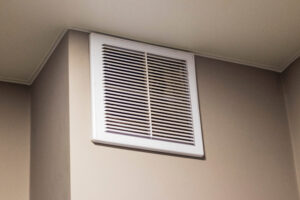A dryer works to extract moisture from wet clothes after washing. When drying your clothes in the dryer, they can leave behind lint that accumulates inside every time the appliance is in operation. The lint pocket inside the dryer may become full and overwhelmed over time, making it less efficient in trapping excess lint. Besides clogging vents, too much lint affects the efficiency and smooth operation of the dryer. This article provides a guide of how the vent pipes in your dryer should be cleaned to avoid accidental fires caused by excess lint and overheating.
Gather cleaning supplies
Save time during cleaning by assembling the necessary cleaning products and equipment beforehand. Stopping to get more supplies not only takes much of your time but also reduces your morale. Having everything you need allows you to do a thorough job because you have all supplies and right tools for the job.

Dryer vent cleaning is very important for safety!
Disconnect the power
The chance of an unintentional electrical shock is reduced when the dryer is unplugged from the power source. For extra security, unplug it from the electrical outlet or socket. Move it a few inches away from the wall to make room to maneuver around it. Sometimes, lint builds up behind the dryer. If your appliance runs on gas, you should think about closing the valve before moving it aside. Using a screwdriver, loosen the duct clamp and disconnect the back-vent pipe.
Detach the lint mesh
Depending on your dryer, the lint mesh can be found above or below the appliance. If you don’t know where to start looking, consider reading the product manual or visit the company’s website online. A shop vacuum is more preferable for extracting lint because it is more efficient than a regular vac. Use a thin hose extension to access the further corners of the chamber housing the trap. Clean inside with a brush to shake up loose dirt and vacuum once more to suck up the small particles within.
Vacuum the interior dryer vent
Using a shop vacuum will ensure a more thorough cleaning than using a regular vacuum cleaner when working on the interior surface. First, turn on the vacuum and get rid of loose lint from the vent opening. Use a hose attachment with various brush extensions to extract debris lodged deeper within the exhaust vents. To access the deeper ducts, it is recommended to use a flexible cleaning tool with varied brush extensions.
Clean the outer sections
Examine the exterior components of the dry to confirm whether the slats can move freely when the appliance is operating. Seized slats may decrease the efficiency and airflow of the dryer. If that’s the case, you need to loosen the hinges with an effective lubricant from a convenient store. Subsequently, use a brush and vacuum to remove all the lint, dirt, or debris from the vent’s entrance. The type of brush can either be fastened on a drill or used manually. Dampen a clean microfiber cloth in warm, soapy water and clean the exterior of the exhaust pipe cover.
Connect the parts and test the dryer
Ensure that all the components of the dryer are reconnected after you’ve finished cleaning. Before pushing the dryer back to its original position, confirm that all connections are well-secured. To make sure the device is working properly, turn it on and test it with an absorbent cloth. If you have thoroughly cleaned and re-attached everything correctly, the dryer should be operating normally without any issues.
How to reduce buildup
It is essential to take preventive measures by cleaning the dryer regularly as it helps to improve its performance. Get rid of lint and other debris that accumulates inside the appliance after every load of laundry. Heavy items can be aired outside to dry and reduce lint content that gets sucked up inside. The ducts need to be inspected and cleaned often to free them from clogs that may restrict airflow.
A dryer can take longer to extract moisture from wet clothes if it doesn’t work properly. This means it uses a lot of energy which can have a significant impact on the amount of money you pay for electricity each month. Lack of proper airflow can cause overheating, and one of the signs that lint or other debris may be burning in the dryer is a burning smell when the dryer is on. Keeping your dryer in good condition protects it from accidental fires and also prolongs its lifespan. Consider hiring experts if it is difficult to access dryer vents for cleaning, as they have experience dealing with complicated tasks.




